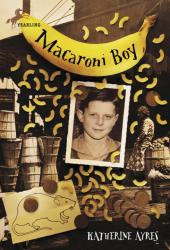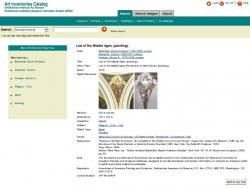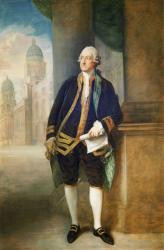Linda Muller
Smithsonian Learning Lab Coordinator
Smithsonian Institution, Heinz History Center
Primary (5 to 8 years old), Elementary (9 to 12 years old), Middle School (13 to 15 years old), Adults, Post-Secondary
Language Arts And English, Science, Social Studies, Arts, Other
Hello, I am one of the Smithsonian Learning Lab Program Coordinators based in Pittsburgh, PA. My professional interests are focused on instructional technology and computer-based learning. I am also fascinated by history as it's presented in primary and secondary resources.
Linda Muller's collections
Harlem Renaissance of the early 1900s
What historical, social, and cultural factors influenced the Harlem Renaissance?
Why did Harlem become the center of African-American arts during the 1920s and 1930s?
 Linda Muller
Linda Muller
20
Investigating a Place: Pennsylvania
This Collection contains stamps, photographs, drawings, sculpture, objects, videos, and music to explore the history and culture of Pennsylvania, the Keystone State. These resources can be used by students to investigate the following questions: How do you define Pennsylvania as a place? What does it mean to be from the Keystone State?
 Linda Muller
Linda Muller
42
Japanese-American Internment
The resources in this collection depict what life was like for Japanese-Americans living in internment camps during WWII. Student may examine these resources as they address the following questions:
Why were Japanese-Americans moved into internment camps during WWII?
Do you agree with the government's argument that it was necessary for national security?
Did the government violate the rights of American citizens?
Do the events of and surrounding Japanese interment have relevance in America today?
 Linda Muller
Linda Muller
20
Little Rock Nine: the integration of Central High School
In a key event of the American Civil Rights Movement, nine black students enrolled at formerly all-white Central High School in Little Rock, Arkansas, in September 1957, testing a landmark 1954 U.S. Supreme Court ruling that declared segregation in public schools unconstitutional. The court had mandated that all public schools in the country be integrated “with all deliberate speed” in its decision related to the groundbreaking case Brown v. Board of Education of Topeka. On September 4, 1957, the first day of classes at Central High, Governor Orval Faubus of Arkansas called in the state National Guard to bar the black students’ entry into the school. Later in the month, President Dwight D. Eisenhower sent in federal troops to escort the “Little Rock Nine” into the school, and they started their first full day of classes on September 25.
Source: Staff, History.com. "Integration of Central High School." History.com. A&E Network. 2010. Web. 5 Aug 2016.
 Linda Muller
Linda Muller
13
Macaroni Boy
This Collection features a variety of primary and secondary resources including maps, photographs, texts, and a sound clip to support the historical context of the book, Macaroni Boy.
 Linda Muller
Linda Muller
22
Manifest Destiny
This collection is comprised of only two resources. It is designed to help students' deepen their analyses of these resources to understand the abstract concept of Manifest Destiny.
 Linda Muller
Linda Muller
3
Musical Instruments Across Time
A collection of musical instruments that span a wide variety of origins, cultures, and materials.
Can you guess where each instrument came from, what period in time it's from, who used it, and what family of instruments it belongs to?
 Linda Muller
Linda Muller
40
My Nighstand
A collection of resources, some of which may be on my nightstand, that illustrate me.
 Linda Muller
Linda Muller
6
Natural Resources of Pennsylvania
Which resources are naturally found in Pennsylvania? This collection of resources illustrates various natural resources found throughout Pennsylvania.
See if you can identify them and discuss what they are used for.
 Linda Muller
Linda Muller
15
Pop Culture 1950 - 1999
What is pop culture? Which resources in this Collection do you think best defines pop culture for each decade? Which resources represent controversial issues? Which resources are timeless? Which resources do you think have a modern-day counterpart?
Challenge: use Pintrest to create a board of images that represent today's pop culture.
 Linda Muller
Linda Muller
28
Prohibition
Did the 18th Amendment effectively keep America dry during the 1920s-1930s? What about Prohibition locally in Pittsburgh - was it effective?
This collection of resources includes images, artifacts, texts, newspaper articles, and videos that are assembled to depict a macro-view of how the Prohibition Era started in America. This collection also parallels a local, micro-view examination of Prohibition here in Pittsburgh including a brief history of political corruption, bootlegging, and murder spanning a five year period from 1927 - 1932.
 Linda Muller
Linda Muller
16
Roman Architecture: Arches and Columns
Roman architecture continued the legacy left by the Greeks. However, the Romans were great innovators and quickly adopted new construction techniques, used new materials, and uniquely combined existing techniques with creative design to create some of the worlds most amazing architectural structures.
Many Roman innovations were created in response to the practical changing needs of Roman society and were designed and built across the Roman world guaranteeing their permanence so that many of these great edifices still exist today.
Source citation: Cartwright, Mark. "Roman Architecture." Ancient History Encyclopedia. 2013. Web. 4 Jan. 2016.
 Linda Muller
Linda Muller
21








